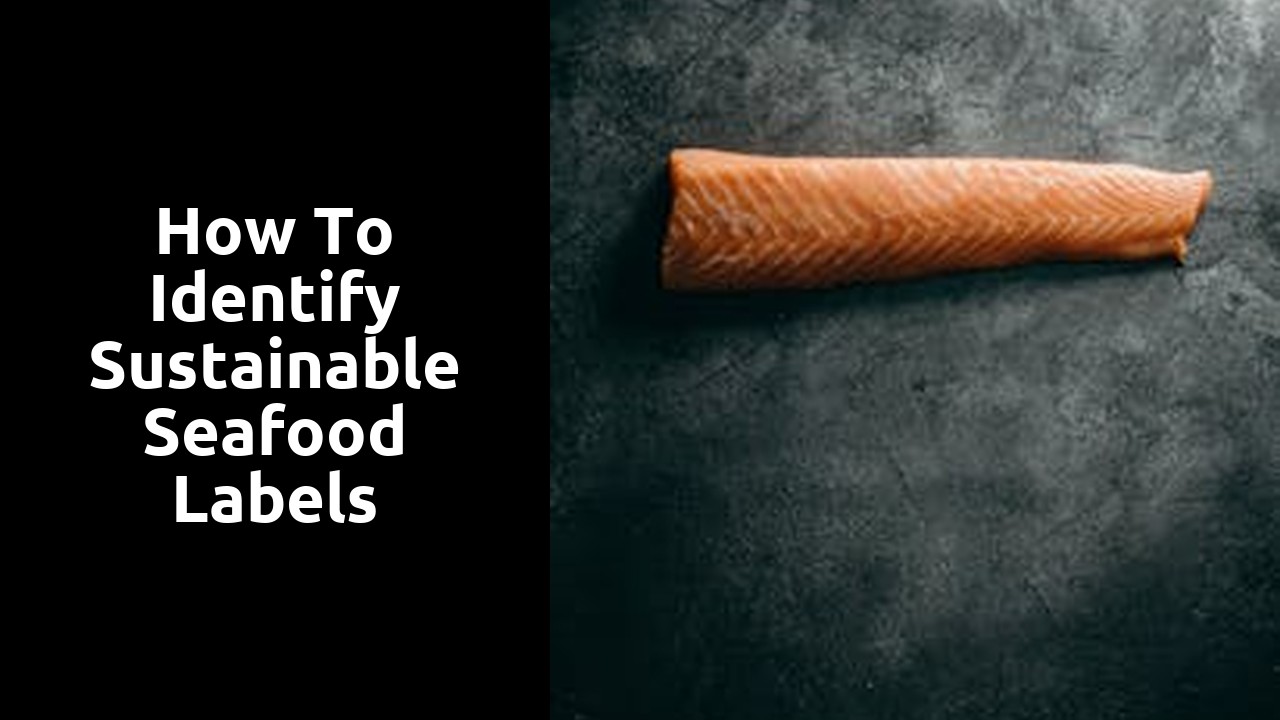How to Identify Sustainable Seafood Labels

Regulations and Compliance in Seafood Labeling
Regulations and compliance play a crucial role in ensuring consumers have access to accurate information about the seafood they purchase. In the United Kingdom, the Food Standards Agency (FSA) sets guidelines for seafood labeling to safeguard consumer interests. These regulations mandate that labels must provide clear details on the species of fish, where it was caught or farmed, and the method used to catch or farm the seafood.
To further enhance transparency and traceability, the Marine Stewardship Council (MSC) provides certification for sustainable fisheries. This label assures consumers that the seafood they are purchasing comes from a fishery that meets strict sustainability standards. By looking out for the MSC label when purchasing seafood, consumers can make informed choices that support environmentally responsible fishing practices.
Best Aquaculture Practices (BAP) Certification
The Best Aquaculture Practices (BAP) certification is a valuable indicator for consumers looking to make sustainable seafood choices. Farms that receive this certification have been rigorously assessed to ensure that they meet specific criteria related to environmental impact, social responsibility, food safety, and animal welfare. By choosing products with the BAP label, consumers can support aquaculture operations that adhere to high standards of sustainability and responsible practices.
This certification also plays a crucial role in promoting transparency in the seafood industry. Consumers can trust that products carrying the BAP label have been sourced from facilities that prioritise sustainable production methods and respect for the natural environment. Choosing seafood with the BAP certification is not only beneficial for the planet but also supports industry efforts to improve practices and mitigate the environmental impact of aquaculture.
Benefits of Supporting Sustainable Fishing Practices
Supporting sustainable fishing practices is crucial for ensuring the health of our oceans and marine life. By choosing seafood that has been caught or harvested in an environmentally responsible manner, consumers can play a part in conserving our marine ecosystems for future generations. Sustainable fishing practices help to protect fish populations from overexploitation and prevent the destruction of habitats, ultimately contributing to the overall well-being of our oceans.
Apart from the conservation benefits, choosing sustainable seafood also often means supporting the livelihoods of fishing communities around the world. By opting for seafood that has been sourced sustainably, consumers can help to ensure that fishermen are able to continue their way of life without depleting marine resources. This not only promotes social responsibility but also empowers communities to thrive economically while preserving the integrity of our oceans.
Dolphin Safe Certification
Dolphin Safe Certification provides consumers with the assurance that the tuna they are purchasing does not harm dolphins during the fishing process. Established in the early 1990s, this certification scheme aims to protect marine mammals from being caught in fishing nets that are often used to catch tuna. It verifies that the fishing methods used do not result in accidental dolphin deaths, offering a more ethical choice for seafood lovers.
A key requirement of Dolphin Safe Certification is the use of fishing practices that do not involve setting nets on dolphins or other marine mammals. By choosing tuna products with this certification, consumers can actively support sustainable fishing methods that help preserve marine ecosystems and wildlife. Additionally, this label promotes transparency in the fishing industry, giving shoppers the opportunity to make informed decisions about the seafood they purchase.
Top Sustainable Seafood Labels Worldwide
When it comes to choosing sustainable seafood, consumers around the world can look for various labels and certifications to ensure that their seafood purchasing decisions support responsible fishing practices. One prominent label to watch for is the Marine Stewardship Council (MSC) certification, which indicates that the seafood comes from a fishery that has met strict sustainability standards. The MSC label can be found on a wide range of seafood products, providing assurance that the fish was caught in a way that minimises impact on the ocean's ecosystems and ensures the long-term health of fish populations.
Another important label to consider is the Aquaculture Stewardship Council (ASC) certification, which signifies responsible aquaculture practices. This label assures consumers that the seafood they are purchasing has been produced in a manner that protects the environment, respects workers' rights, and upholds high animal welfare standards. By looking for the ASC label, consumers can feel confident that they are supporting sustainable aquaculture operations that prioritise both environmental and social responsibility.
Certified Organic by the Soil Association
Certified Organic by the Soil Association signifies a key stamp of approval for sustainable seafood choices. The Soil Association is a reputable organisation in the United Kingdom that plays a crucial role in setting high standards for organic produce, including seafood. When a seafood product is labeled as "Certified Organic by the Soil Association," it means that the entire supply chain, from production to packaging, has been scrutinised and found to adhere to strict organic standards.
Consumers can trust this label to guarantee that the seafood they are purchasing is free from synthetic chemicals, antibiotics, and genetically modified organisms. Additionally, choosing products with the Certified Organic by the Soil Association label promotes responsible farming practices that are environmentally friendly and support the long-term health of our oceans. This certification is a reliable marker for those wanting to make ethical and sustainable choices when it comes to seafood consumption.
Related Links
How to Choose Sustainable Salmon FilletsHow to Cook Sustainable Salmon Fillets
Roundup: Best Sustainable Salmon Fillets Brands
Review: The Impact of Sustainable Salmon Fillets
10 Sustainable Seafood Choices for Ocean-friendly Eating
Why Sustainable Seafood Choices Matter